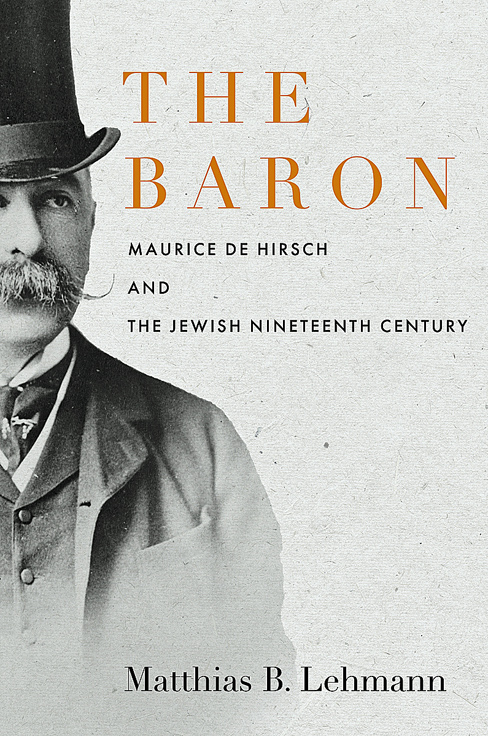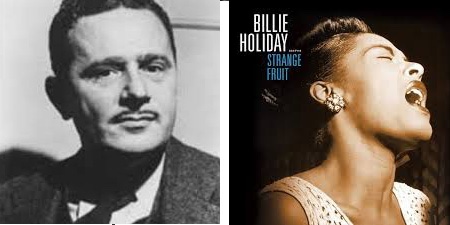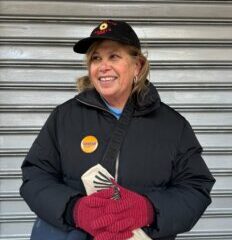Features
The privileged, yet not unscathed, life of Baron Maurice de Hirsch

The Baron: Maurice de Hirsch and the Jewish Nineteenth Century
by Matthias B. Lehmann
Stanford University Press, 400 pp., $49
Reviewed by IRENA KARSHENBAUM
In reading Matthias B. Lehmann’s The Baron: Maurice de Hirsch and the Jewish Nineteenth Century what becomes painfully obvious is that despite owning chateaus and estates across Europe and being a member of the aristocracy, this elevated status still did not protect Baron Maurice de Hirsch, the wealthiest Jewish person of his time, from antisemitism.
How to find a solution to this eternal hatred haunted Hirsch his entire life and influenced not only how he envisioned the lives of his future grandchildren, but guided his philanthropic projects that changed the fates of millions of people.
It is a rare feat to acquire great wealth within a single generation. Hirsch was no exception.
Born Moritz von Hirsch — later to be known as Maurice de Hirsch — in 1831 in Munich, Bavaria, to Joseph and Caroline (née Wertheimer) von Hirsch, Lehmann describes how the young Hirsch grew up a member of “the noble class, with its privileges and rights,” yet was still the subject of the contradictory Jewish edict of 1813, which opened most occupations to Jews and granted them freedom of worship, but also imposed numerous restrictions, “designed to control and limit the overall number of Jews tolerated within the kingdom [of Bavaria]. Jewish immigration was banned, and the so-called Judenmatrikel established quotas for the permissible size of each Jewish community, limiting permission to marry and designed to keep the number of Jews static or reduce it.”
Yet despite this antisemitic decree, in 1818, Hirsch’s grandfather, Jacob Hirsch, managed to obtain the status of nobility from the King of Bavaria and the upwardly mobile family was allowed to be called “von Hirsch auf Gereuth,” after an estate the senior patriarch had purchased a few years earlier.
The Hirschs, however, were mere “cattle merchants” (albeit conducting business with the King of Bavaria) in comparison to the wealth and status of his mother’s family, the Wertheimers, who were descendants of Samson Wertheimer, the banker to Emperor Charles VI.
The Hirsch family had to wait another half a century, until 1869, when Joseph was awarded the hereditary title of baron for “contributions to the welfare of the Bavarian state,” following his establishing a field hospital during the Prussian-Austrian War of 1866. (The family’s philanthropic contributions were not limited to this singular charitable act, but this recognition speaks to Joseph having finally “played his cards right,” which secured “a place for himself and his descendants as members of the European aristocracy.”)
At age thirteen, Hirsch was moved to Brussels where, in 1855, he succeeded in doing what his father had done a generation earlier — he married up. His bride, Clara Bischoffsheim, was the daughter of Jonathan Raphaël Bischoffsheim, the partner of Bischoffsheim & Goldschmidt, one of Europe’s leading banks, which would one day become France’s BNP Paribas. Clara had worked as her father’s secretary, training that would serve her well to act as her husband’s “chief secretary” for their expanding business interests and philanthropic work.
Hirsch’s arrival in Brussels was of perfect timing, not only for his matrimonial aspirations, but it also coincided with the birth of the railway age when Belgium opened its first international railway line, linking Antwerp to Cologne.
At this time, Hirsch developed a passion for railroads. He formed an odd partnership with a known antisemite, André Langrand-Dumonceau, who advocated for “the building of an international Catholic financial empire to compete with… Jewish- (and Protestant-) dominated high finance.” The partnership eventually dissolved, Langrand-Dumonceau’s financial Ponzi scheme collapsed and the stake that he had owned in the Ottoman railway concession ended up in Hirsch’s hands thanks to the pursuit of an Ottoman public works minister, an Armenian named Davud Pasha, with whom he signed an agreement, in April of 1869, to link Constantinople and Salonika with central European railways.
The business deal became, as Lehmann writes, “The defining moment in Hirsch’s life as a businessman, and which was the main source of one of the largest fortunes in Europe of the late nineteenth century.”
Almost twenty years later, in the summer of 1888, after successfully maneuvering the corrupt Ottoman political and commercial landscape, the first train on the railroad that Hirsch had built, left Vienna for Constantinople. Yet even this remarkable achievement of linking Europe with the Ottoman Empire ignited antisemitic vitriol.
Lehmann writes, “The idea of building a Vienna-Constantinople-Salonika railroad link had sparked imperialist dreams in the Habsburg capital. When fantasies of colonial riches failed to materialize as the completion of the railway connections was repeatedly delayed, a narrative… became increasingly personalized, focusing on Baron Hirsch in the guise of the “Parisian financier” and “the Jew.” Rather than the bursting of a speculative bubble in Vienna in 1873 or the effect of the Russo-Ottoman War of 1877-1878, not to mention the machinations of the Great Powers of Europe or the political chaos in Constantinople in the mid-1870s, a story emerged in which it was Baron Hirsch, single-handedly, who betrayed the dream of Austria’s Oriental empire.”
Hirsch understood that antisemitism was impossible to defeat. In giving an interview, in January of 1889, to the New York Herald, titled “The Jews Must Disappear: A Hebrew Millionaire Spends Enormous Sums to Assimilate Them with Christians” he explained his solution, “The Jewish question can only be solved by the disappearance of the Jewish race, which will inevitably be accomplished by the amalgamation of Christians and Jews.”
In terms of his own descendants, when his son, Lucien, was in his twenties, Hirsch stated that, “He must marry an Englishwoman,” especially since, “younger members of the families of Rothschild and Montefiore” were assimilating through marriage.
Immersed in an antisemitic milieux, it is important to also consider that neither Hirsch, his wife, or their son even contemplated conversion unlike many members of the Jewish nobility of western Europe like, Benjamin Disraeli, the 19th-century British prime minister who converted to Christianity. Assimilation was for the next generation through the planned raising of their future grandchildren as Christians.
With the sudden passing of his only son at age 30, Hirsch — whose loyalties were still deeply intertwined with his co-religionists — shifted his energies to helping the Jews of the Russian Empire who were facing escalating antisemitism.
In 1891, Hirsch incorporated the Jewish Colonization Association (JCA) in London with initial capital of 2 million pounds sterling (the 2023 equivalent of about $2 billion) of his own funds “to assist… the emigration of Jews from any parts of Europe or Asia… where they may be subjected to any special laws,” and to help them, “establish colonies in various parts of North and South American… for agricultural [purposes].”
With his recent experience conducting business with the corrupt Ottomans, he objected, ““On principal,” to purchasing land for colonization purposes anywhere in the Ottoman Empire, where the authorities were bound to subject the colonists to endless “chicaneries and difficulties,” and, ““religious memories and ancient traditions” were a feeble ground on which to build a large-scale colonization enterprise.”
Hirsch rejected Theodor Herzl’s “fantastical plan, of creating a “Jewish state”” in Palestine. (Herzl himself went on to contemplate Hirsch’s efforts in an 1896 article for London’s Jewish Chronicle titled, “Shall we choose Argentine or Palestine?”)
By the fall of 1891, Hirsch decided that the focus of JCA’s work would be the evacuation of 3.25 million Russian Jews, primarily to Argentina, which he estimated would take about twenty-five years to complete. By 1896, the year of Hirsch’s passing, 6,757 colonists were living on 910 farms in Argentina.
In Canada, the majority of JCA’s work did not begin until after Hirsch’s passing and it is believed that most Jewish farming communities received at least some funding from the association. A number of the prairie settlements — Hirsch and Sonnenfeld in Saskatchewan, and Narcisse in Manitoba — were named after leading JCA figures.
Lehmann’s thoroughly researched biography and view into the Jewish nineteenth century rings eerily true for Jews today.
Irena Karshenbaum writes in Calgary.
irenakarshenbaum.com
Features
A People and a Pulse: Jewish Voices in Jazz and Modern Music

By MARTIN ZEILIG Jazz history is usually told through its most iconic names — Armstrong, Ellington, Parker, Davis — yet running alongside that familiar story is another, often under‑acknowledged one: the deep and enduring contribution of Jewish musicians, bandleaders, composers, and cultural intermediaries.
From the moment jazz emerged at the turn of the 20th century, Jews were not simply observers but active shapers of the music and the industry around it. Their influence — artistic, entrepreneurial, and cultural — has been both significant and, in many respects, disproportionately large. Jews and Jazz (171 pg. $18.75 US) a self‑published work by Laurence Seeff, brings this parallel narrative into sharp, affectionate focus.
Seeff is an ideal guide.
Born in London in 1951, he built a career that moved from statistics to energy policy in Paris, from financial markets at Bloomberg to corporate training in the City of London, all while writing poetry, songs, and humorous verse. Today he lives in Israel, where he continues to write, perform, learn Ivrit, and enjoy life with his large family. Through all these chapters runs a constant passion for jazz — a passion sparked more than fifty‑five years ago when he first heard Terry Lightfoot’s Jazzmen in a Bournemouth pub.
His writing blends clarity, humour, and genuine love for the music and the people who made it.
The musicians he profiles often came from immigrant families who brought with them the musical DNA of Eastern Europe — the cadences of synagogue chant, the urgency of klezmer, the cultural instinct for learning and artistic expression. When these sensibilities met the African American genius of early jazz, the result was a remarkable creative fusion.
Some figures, like Chico Marx, are better known for comedy than musicianship, yet Seeff reminds us that Chico was a serious pianist whose jazz‑inflected playing appeared in every Marx Brothers film and whose orchestra launched young talents like Mel Tormé. Others — Abe Lyman, Lew Stone, and Oscar Rabin — shaped the dance‑band era on both sides of the Atlantic.
Canadian readers will be pleased to find Morris “Moe” Koffman included as well: the Toronto‑born flautist and saxophonist whose “Swinging Shepherd Blues” became an international hit and whose long career at the CBC helped define Canadian jazz.
Seeff also highlights artists whose connection to jazz is more tangential but culturally revealing. Barbra Streisand, for example — a classmate and choir‑mate of Neil Diamond at Erasmus Hall High School — was never a natural jazz singer, yet her versatility allowed her to step into the idiom when she chose.
She opened for Miles Davis at the Village Vanguard in 1961 and, nearly half a century later, returned to the same club to promote Love Is the Answer, her collaboration with jazz pianist Diana Krall. Her contribution to jazz may be limited, but her stature as one of the greatest singers of all time is unquestioned.
Neil Diamond, too, appears in these pages.
Though not a jazz artist, he starred — with gusto, if not great acting finesse — in the 1980 remake of The Jazz Singer, 53 years after Al Jolson’s original. The film was not a success, nor was it truly a jazz picture, but its title and its star’s Jewish identity make it part of the cultural tapestry Seeff explores.
Diamond and Streisand recorded together only once, in 1978, on “You Don’t Bring Me Flowers,” a reminder of the long‑standing artistic ties between them.
Mel Tormé, by contrast, was deeply rooted in jazz. Nicknamed “The Velvet Fog,” he was a prodigy who sang professionally at age four, wrote his first hit at sixteen, drummed for Chico Marx, and recorded with Benny Goodman and Artie Shaw. Ethel Waters once said he was “the only white man who sings with the soul of a black man.” His story exemplifies the porous, collaborative nature of jazz.
Seeff also includes non‑Jewish figures whose lives intersected meaningfully with Jewish culture. Frank Sinatra — perhaps the greatest crooner of them all — was a steadfast supporter of Jewish causes, from protesting during the Holocaust to raising funds for Israel Bonds and the Hebrew University. His multiple visits to Israel, including a major concert in Jerusalem in 1975, underscore the depth of his connection.
Danny Kaye earns his place through his close work with Louis Armstrong, his pitch‑perfect scat singing, and his starring role in The Five Pennies, the biopic of jazz cornetist Red Nichols. Though not a jazz musician per se, his performances radiated a genuine feel for the music.
A later generation is represented by Harry Connick Jr., whose Jewish mother and New Orleans upbringing placed him at the crossroads of cultures. A prodigy who played publicly at age five, he went on to become one of the most successful jazz‑influenced vocalists of his era, with ten number‑one jazz albums.
Even Bob Dylan appears in Seeff’s mosaic — another reminder that Jewish creativity has touched every corner of modern music, sometimes directly through jazz, sometimes through the broader cultural currents that surround it.
Taken together, the concise portraits in Jews and Jazz form a lively, engaging mosaic — a celebration of creativity, resilience, and cross‑cultural exchange. They show how Jewish musicians helped carry jazz from vaudeville and dance halls into swing, bebop, cool jazz, pop, rock, and film music.
They remind us that jazz, at its heart, is a meeting place: a space where people of different backgrounds listen to one another, learn from one another, and create something larger than themselves.
For further information, contact the author at the following email address: laurenceseeff@yahoo.co.uk
Features
Jews in Strange Places

By DAVID TOPPER The Jewish contribution to 20th century popular music is well known. From Jerome Kern through to Stephen Sondheim, Jews played major roles as both composers and lyricists in the so-called Great American Songbook. (An exception is Cole Porter.) It continued in Musical Theatre throughout the rest of the century.
One very small piece of this story involves what Time magazine in the December 1999 issue called “the tune of the century.” First recorded sixty years before that, it is the powerful and haunting tune called “Strange Fruit,” which is about the lynching of black people in the southern USA. First sung by Billie Holiday in 1939, it became her signature tune.
So, why do I bring this up? Because there is a multi-layered Jewish connection to this song that is worth recalling, which may not be known to many readers.
Let’s start with the lyrics to “Strange Fruit,” which are the essence of this powerful piece:
Southern trees bear strange fruit,Blood on the leaves and blood at the root,Black bodies swinging in the southern breeze,Strange fruit hanging from the poplar trees.Pastoral scene of the gallant south,The bulging eyes and the twisted mouth,Scent of magnolias, sweet and fresh,Then the sudden smell of burning flesh.Here is fruit for the crows to pluck,For the rain to gather, for the wind to suck,For the sun to rot, for the trees to drop,Here is a strange and bitter crop.
Before becoming lyrics in a song, this poem stood alone as a potent statement about the lynchings still taking place throughout the American South at the time. The strong metaphorical imagery never explicitly mentions the lynching, which adds to the poetic power of this poem. Standing alone, I believe it’s an important protest verse from the 20th century.
Searching it on the internet, you may find the author listed as Lewis Allan. But that’s not his real name. “Lewis Allen” is the often-used pen name of Abel Meeropol, a Jewish High School teacher from the Bronx in New York. He and his wife, Anne (nee Shaffer), had two stillborn children with those names – a fact that adds a poignant element to this story.
The origin of the poem for Abel was a photograph he had seen of a lynching of black men in the South. I have seen such images, possibly even the one Abel saw: for example, a sepia photograph of two black men hanging from a long tree limb, and a large crowd of white people below (men, women and even children!), most seeming dressed in their Sunday best (some men with straw hats) looking up and gawking at the sight, some with smiles on their faces – as if attending a festive spectacle. Like Abel, I felt repelled by the picture: it turned my stomach. This communal display of horrific cruelty gave me a glimpse into Abel’s mind, and I understood how it compelled him to write about it. He thus wrote the poem, and it was published in a teacher’s magazine in 1937.
Being a songwriter too, in 1938 Abel added a melody and played it in a New York club he often attended. But here’s where this story’s documentation gets contradictory, depending upon who is recalling the events. The club owner knew Billie Holiday, and he showed the song to her. What her initial response was, we cannot know for sure. But we do know that in a relatively short time, she added it to her repertoire. It eventually became her signature tune. She initially sang it in public, but because of its popularity among her fans, there was pressure to record it too.
There were initial rejections from recording companies because of the controversial content. But Commodore Records took a chance and pressed the first recording in April 1939. This was the same year the movie “Gone with the Wind” came out; it was steeped in racial stereotyping. It was also sixteen years before Rosa Parks refused to give up her seat on a bus in Montgomery, Alabama.
As a record, the song obviously reached a large audience. Since the content was about racism, the song was seen as politically radical; not surprisingly, many radio stations banned it from the airwaves.
Furthermore, it’s also not surprising that Abel, a schoolteacher, was called to appear before a committee of New York lawmakers who were looking for communists in the schools. Possibly they were surprised to find that the poem and the song were written by a white man – and a Jew to boot. In particular, they wanted to know if he was paid by the Communist Party to write this song. He was not. And, in the end, they let him go. But shortly thereafter he quit his teaching job.
This took place in 1941 and was a precursor to the continued American obsession with communism into the 1950s, under Senator Joe McCarthy.
Indeed, that episode had an impact on Abel and Anne too. In 1953 Julius and Ethel Rosenberg were convicted of giving information about nuclear science to the Soviet Union, and they were the first married couple to be executed in the electric chair. They left two sons, Michael (age 10) and Robert (age 6). Apparently, immediate family members were reticent to get involved with the boys, possibly afraid of being accused of sympathizing with communism.
Enter Abel and Anne. Without a moment’s hesitation they stepped in, taking and raising the boys. As Michael and Robert Meeropol they eventually went on to become college professors – and naturally were active in social issues. Anne died in 1973. Abel died in 1986 in a Jewish nursing home in Massachusetts, after a slow decline into dementia. Long before that, Billie Holiday died in 1959, ravaged by the drug addition that took her life at forty-four years of age.
See why I called this a multi-layered Jewish story that’s worth telling?
To hear Billie Holiday singing “Strange Fruit” click here: Strange Fruit
Features
Is This the End of Jewish Life in Western Countries?

By HENRY SREBRNIK “Globalize the Intifada” has been the chant echoing through streets since October 7th, 2023. It was never a metaphor, and we now see the gruesome results across the western world, from Australia to Canada: the rise of groups of large, active networks of Islamist and anti-Zionist organizations.
Jews in the West are discovering that the nations they defended, enriched, and profoundly shaped have become increasingly inhospitable. After the Holocaust, explicit Jew-hatred became unfashionable in polite society, but the impulse never disappeared. The workaround was simple: separate Zionism from Judaism in name, then recycle every old anti-Jewish trope and pin it on “the Zionists.”
We have seen the full legitimization of genocidal anti-Zionism and its enthusiastic adoption by large segments of the public. The protests themselves, as they began immediately on October 7th, were celebrations of the Hamas massacres. The encampments, the building occupations, the harassment campaigns against Jewish students, the open calls for intifada, the attacks on Jews and Jewish places have become our new norm. History shows us that antisemitism does not respond to reason, incentive or the honest appeals of the Jewish community.
Outside the United States, there is no Western political establishment with either the will or the capability to address this problem, let alone reverse its growth. I’m sorry to say this, but the future of Western Europe, Canada, Australia, and New Zealand is likely to be increasingly Jew-free.
Today, police stand and watch mobs chant for Israel’s destruction, call for the genocide of its people, harass visibly Jewish citizens, and drive antisemitic intimidation deep into urban life. They now believe their job is to enforce the law only if it does not risk upsetting violent constituencies. This makes Jews expendable, because defending them risks confrontation. This was very clear in the Bondi Beach massacre.
Jews are again donning caps instead of kippot, dressing generically with no cultural markers, and avoiding even a tote bag with Hebrew on it. A corrosive creep toward informal segregation in retail and service sectors is occurring, as Jewish customers report being refused service. A mezuzah hanging from a rideshare mirror leads to cancellations. When Jews express frustration, they are accused of exaggeration or attempting to suppress criticism of Israel. Jewish fear is not treated as a real problem.
“Jews Are Being Sent Back into Hiding,” the title of a Dec. 15 article in the New York Free Press by David Wolpe and Deborah Lipstadt, asserts that the attacks on Jews, including physical assaults, social media campaigns and, most tragically, the recent murders in Australia, are part of a purposive campaign designed to make Jews think twice about gathering with other Jews, entering a synagogue, going to kosher restaurants, putting a mezuzah on the doorpost of their apartments or dorm rooms, or wearing a Jewish star around their necks.
“We know of no one who would consider giving a niece, nephew, grandchild, or young friend a Jewish star without first asking permission of their parents,” they write. The unspoken, and sometimes spoken, question is: “Might wearing a star endanger your child’s well-being?”
Recently, a prominent American rabbi was entering a Target store in Chicago with her grandson, whom she had picked up from his Jewish day school. As they walked into the store the 10-year-old reached up and automatically took off his kippah and put it in his pocket. Seeing his grandmother’s quizzical look, he explained: “Mommy wants me to do that.”
Borrowing a phrase from another form of bigotry, they contend that Jews are going “back into the closet.” No public celebration of Hanukkah took place in 2025 without a significant police presence. Some people chose to stay home.
Lipstadt and Wolpe know whereof they speak. They are respectively a professor of history and Holocaust studies who served as the Biden administration’s ambassador tasked with combating antisemitism, the other a rabbi who travels to Jewish communities throughout the world, and who served on Harvard’s antisemitism task force in the aftermath of the October 7, 2023 pogrom.
What the world has seen over the past two years is a continual, often systematic attempt to terrorize Jews. When political leaders fail to condemn rather than merely “discourage” chants of “globalize the intifada,” we are seeding the ground for massacres like the Hannukah one in Sydney.
If each Jewish holiday will now be seen by antisemites as an opportunity for terror, then the prognosis for diaspora Jewry is bleak. There will be fewer public events, more alarms, more bag checks at doors; there will have to be more security and more police. Unless things change, Jewish life in the diaspora will become more sealed off from the larger society.
Why has this failure come about? Confronting antisemitism, stopping the mobs, challenging the activists, and disciplining antisemitic bureaucrats all carry electoral risk for politicians; Jews are demographically irrelevant, especially compared with Muslim voters, with the U.S. being the only partial exception.
There are those who suggest Jews stop donating funds to educational and other institutions that have turned against us. At this point, I doubt very much that withdrawing dollars will have an impact. For every dollar withdrawn, there will be 100 from Qatar and other sources in its place.
Throughout history, the way a society treats its Jews predicts its future with unerring accuracy. If Jews leave, it will be because a civilization that will not defend its Jews will also defend next to nothing and may itself not survive.
Henry Srebrnik is a professor of political science at the University of Prince Edward Island



